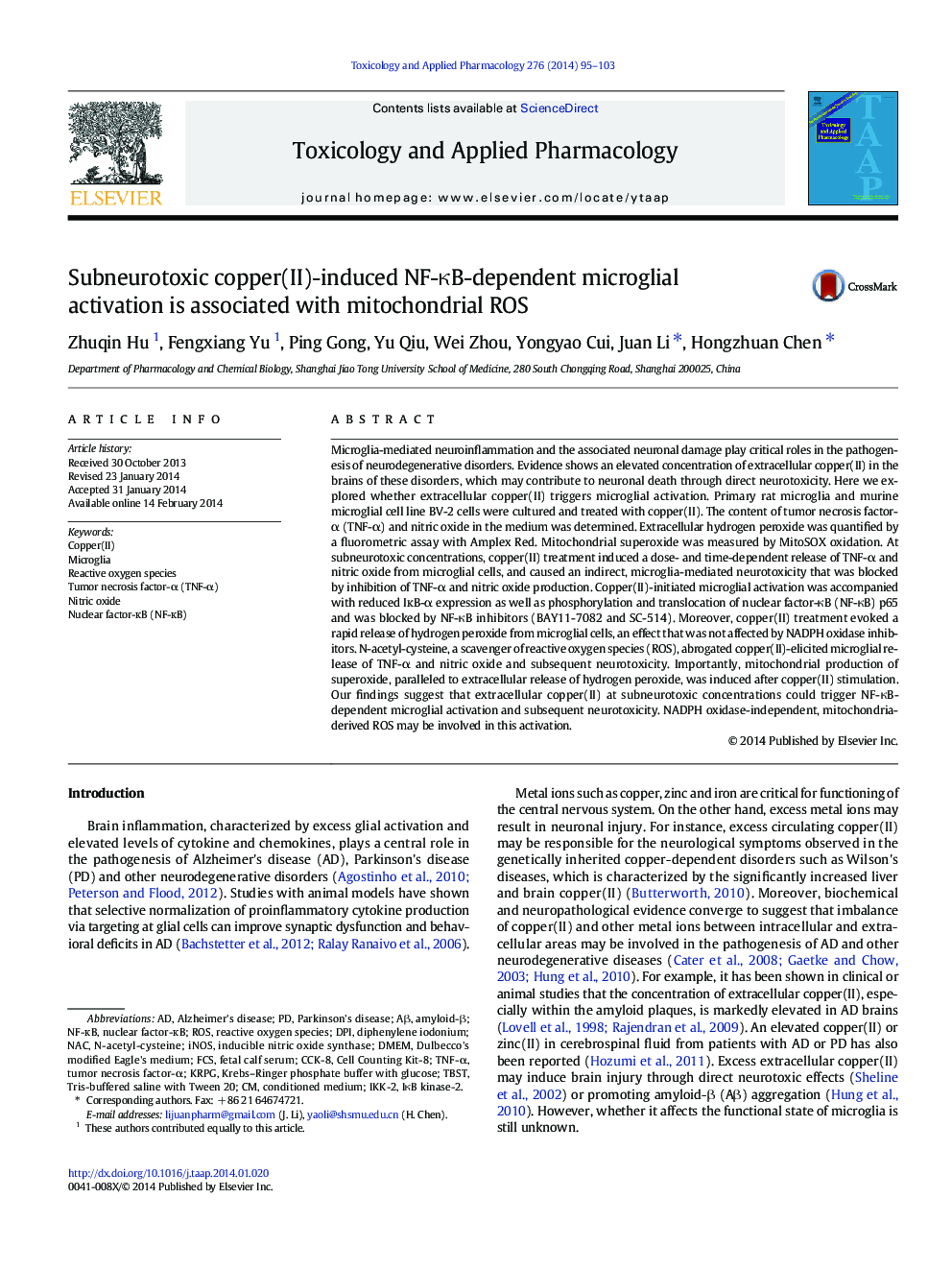| Article ID | Journal | Published Year | Pages | File Type |
|---|---|---|---|---|
| 2568516 | Toxicology and Applied Pharmacology | 2014 | 9 Pages |
•Subneurotoxic copper(II) triggers NF-κB-dependent microglial activation.•This activation leads to hippocampal neuronal death.•This activation may involve mitochondria-derived reactive oxygen species.
Microglia-mediated neuroinflammation and the associated neuronal damage play critical roles in the pathogenesis of neurodegenerative disorders. Evidence shows an elevated concentration of extracellular copper(II) in the brains of these disorders, which may contribute to neuronal death through direct neurotoxicity. Here we explored whether extracellular copper(II) triggers microglial activation. Primary rat microglia and murine microglial cell line BV-2 cells were cultured and treated with copper(II). The content of tumor necrosis factor-α (TNF-α) and nitric oxide in the medium was determined. Extracellular hydrogen peroxide was quantified by a fluorometric assay with Amplex Red. Mitochondrial superoxide was measured by MitoSOX oxidation. At subneurotoxic concentrations, copper(II) treatment induced a dose- and time-dependent release of TNF-α and nitric oxide from microglial cells, and caused an indirect, microglia-mediated neurotoxicity that was blocked by inhibition of TNF-α and nitric oxide production. Copper(II)-initiated microglial activation was accompanied with reduced IкB-α expression as well as phosphorylation and translocation of nuclear factor-κB (NF-κB) p65 and was blocked by NF-κB inhibitors (BAY11-7082 and SC-514). Moreover, copper(II) treatment evoked a rapid release of hydrogen peroxide from microglial cells, an effect that was not affected by NADPH oxidase inhibitors. N-acetyl-cysteine, a scavenger of reactive oxygen species (ROS), abrogated copper(II)-elicited microglial release of TNF-α and nitric oxide and subsequent neurotoxicity. Importantly, mitochondrial production of superoxide, paralleled to extracellular release of hydrogen peroxide, was induced after copper(II) stimulation. Our findings suggest that extracellular copper(II) at subneurotoxic concentrations could trigger NF-κB-dependent microglial activation and subsequent neurotoxicity. NADPH oxidase-independent, mitochondria-derived ROS may be involved in this activation.
